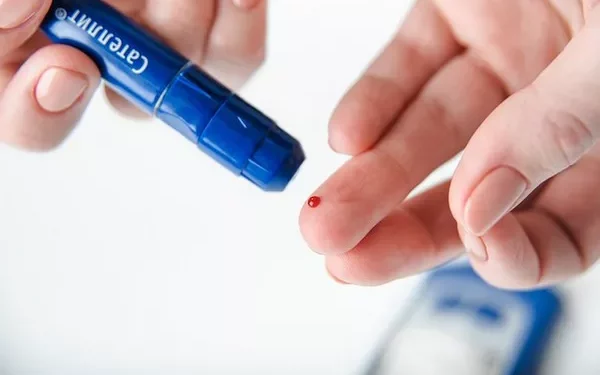Blood glucose monitoring is a critical component of diabetes management. It helps individuals with diabetes make informed decisions about their diet, physical activity, and medication. One common practice in blood glucose testing is wiping away the first drop of blood before taking a reading. This article explores the reasons behind this practice, its importance for accurate results, and the implications for diabetes management.
The Fundamentals of Blood Glucose Monitoring
Understanding Blood Glucose Levels
Blood glucose levels indicate the concentration of glucose in the blood. For diabetics, maintaining these levels within a target range is crucial to prevent both short-term and long-term complications. Regular monitoring helps detect hyperglycemia (high blood sugar) and hypoglycemia (low blood sugar), allowing timely interventions.
The Process of Blood Glucose Testing
Blood glucose testing typically involves pricking the fingertip with a lancet to obtain a small blood sample. This sample is then applied to a test strip inserted into a glucose meter, which provides a reading of the blood glucose level.
The Role of the First Drop of Blood
Why Wipe Away the First Drop?
Wiping away the first drop of blood is a widely recommended practice in blood glucose testing. This step is crucial for several reasons:
- Contaminants and Residual Substances
- Consistency in Testing
- Accuracy of Readings
Contaminants and Residual Substances
The first drop of blood may contain contaminants and residual substances from the skin. These can include:
Sweat: Contains salt and other substances that can alter the blood sample.
Dirt and Oils: From handling various objects throughout the day.
Residues from Alcohol Swabs: Used to clean the skin before lancing.
These contaminants can affect the accuracy of the blood glucose reading by introducing foreign substances into the sample.
Consistency in Testing
Consistency in blood glucose testing is essential for reliable results. By wiping away the first drop of blood, individuals can ensure that subsequent drops are more uniform and less likely to be affected by external factors. This practice promotes consistency in:
Sample Quality: Ensures the blood sample is pure and free from external contaminants.
Test Results: Reduces variability in readings, providing a more accurate reflection of blood glucose levels.
Accuracy of Readings
Accurate blood glucose readings are vital for effective diabetes management. Inaccurate readings can lead to incorrect treatment decisions, which may result in:
Improper Medication Dosing: Potentially causing hyperglycemia or hypoglycemia.
Mismanagement of Diet and Exercise: Affecting overall blood sugar control.
By wiping away the first drop of blood, individuals can minimize the risk of contaminants affecting their readings, leading to more accurate and reliable results.
Scientific Evidence Supporting the Practice
Studies and Research Findings
Several studies have investigated the impact of wiping away the first drop of blood on the accuracy of blood glucose readings. Key findings include:
Reduction in Contaminants: Research shows that the first drop of blood often contains higher levels of skin contaminants, which can skew readings.
Improved Accuracy: Studies indicate that wiping away the first drop leads to more accurate and consistent blood glucose measurements.
Guidelines and Recommendations
Many health organizations and diabetes care guidelines recommend wiping away the first drop of blood to ensure accurate blood glucose testing. For example:
American Diabetes Association (ADA): Recommends wiping away the first drop to avoid contaminants and improve accuracy.
International Diabetes Federation (IDF): Suggests this practice for more reliable self-monitoring of blood glucose levels.
Practical Steps for Effective Blood Glucose Monitoring
Proper Technique for Blood Glucose Testing
To achieve accurate blood glucose readings, it is essential to follow proper testing techniques. Key steps include:
Clean the Test Site: Use soap and water or an alcohol swab to clean the fingertip. Allow it to dry completely.
Prepare the Lancing Device: Load the lancet and adjust the depth setting as needed.
Obtain a Blood Sample: Prick the fingertip with the lancet. Gently squeeze the finger to form a drop of blood.
Wipe Away the First Drop: Use a clean tissue or cotton ball to wipe away the first drop of blood.
Collect the Second Drop: Apply the second drop of blood to the test strip for an accurate reading.
Tips for Consistent and Accurate Results
Use Fresh Lancets: Replace the lancet regularly to ensure a clean and sharp puncture.
Proper Storage of Test Strips: Store test strips in a cool, dry place to maintain their integrity.
Follow Meter Instructions: Adhere to the manufacturer’s guidelines for using the glucose meter and test strips.
The Impact of Accurate Blood Glucose Monitoring on Diabetes Management
Improved Glycemic Control
Accurate blood glucose monitoring allows individuals to maintain better glycemic control. This can lead to:
Reduced Risk of Complications: Including cardiovascular disease, neuropathy, and retinopathy.
Enhanced Quality of Life: Fewer episodes of hypo- or hyperglycemia and better overall health.
Informed Decision-Making
Reliable blood glucose readings enable individuals and healthcare providers to make informed decisions regarding:
Medication Adjustments: Ensuring proper dosing and timing.
Diet and Exercise Plans: Tailoring dietary choices and physical activity to maintain stable blood sugar levels.
Empowerment and Self-Management
Consistent and accurate monitoring empowers individuals to take charge of their diabetes management. This can lead to:
Greater Confidence: In managing their condition and making lifestyle adjustments.
Proactive Health Management: Identifying patterns and trends in blood glucose levels to prevent complications.
Addressing Common Concerns and Misconceptions
Is Wiping Away the First Drop Always Necessary?
While wiping away the first drop is generally recommended, there may be situations where it is not strictly necessary. For instance, if the fingertip is thoroughly cleaned and free from contaminants, the impact of the first drop may be minimal. However, as a best practice, wiping away the first drop is advised to ensure consistency and accuracy.
Can Alternative Sites Be Used for Testing?
Some individuals may use alternative sites for blood glucose testing, such as the forearm or palm. While these sites can be useful, especially for those who experience fingertip pain, it is important to follow proper guidelines for site preparation and sample collection to ensure accurate readings.
Addressing Pain and Discomfort
Blood glucose testing can cause discomfort, particularly with frequent finger pricking. To minimize pain:
Use a Gentle Technique: Apply gentle pressure and avoid squeezing the finger too hard.
Rotate Testing Sites: Use different fingers and sites to reduce irritation and allow healing.
Consider Alternative Devices: Such as lancing devices with adjustable depth settings to reduce discomfort.
See also: What Range Should I Keep My Blood Sugar?
Wiping away the first drop of blood during blood glucose testing is a simple yet crucial step to ensure accurate and reliable readings. By removing contaminants and achieving consistency in blood samples, individuals with diabetes can make informed decisions about their management, leading to better glycemic control and overall health. Adhering to proper testing techniques and understanding the importance of this practice can significantly enhance the effectiveness of diabetes self-management and improve quality of life.
Related topics:
When Should I Check My Sugar Levels?


























